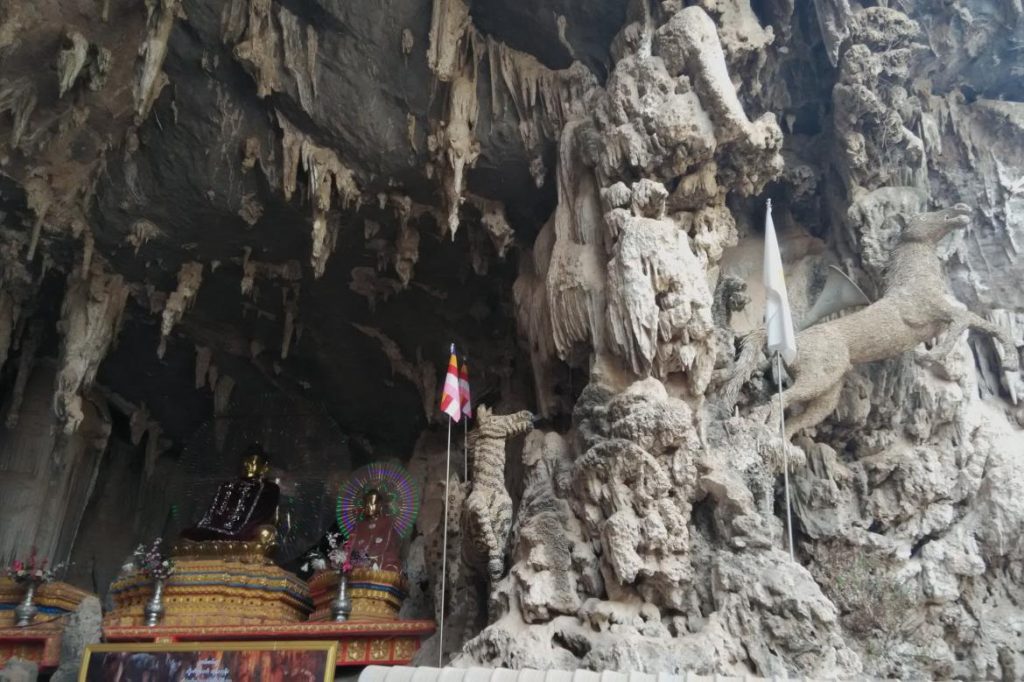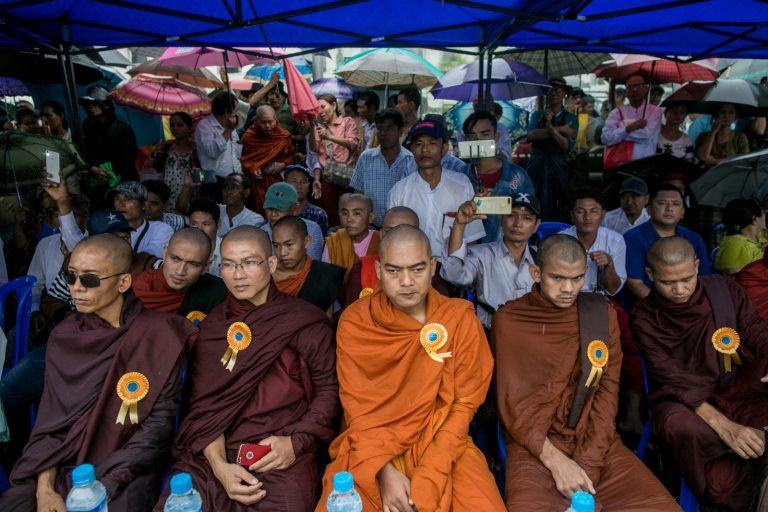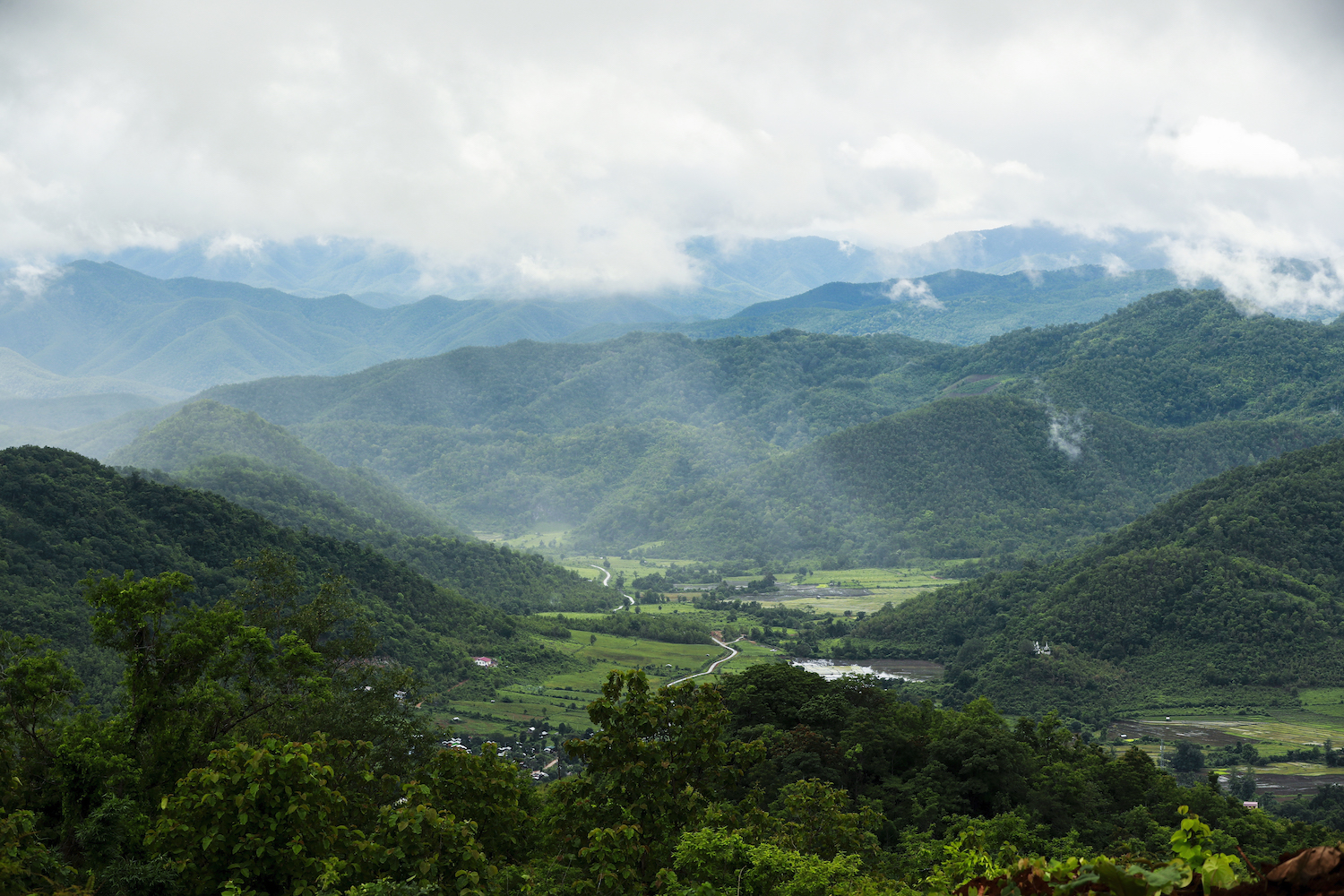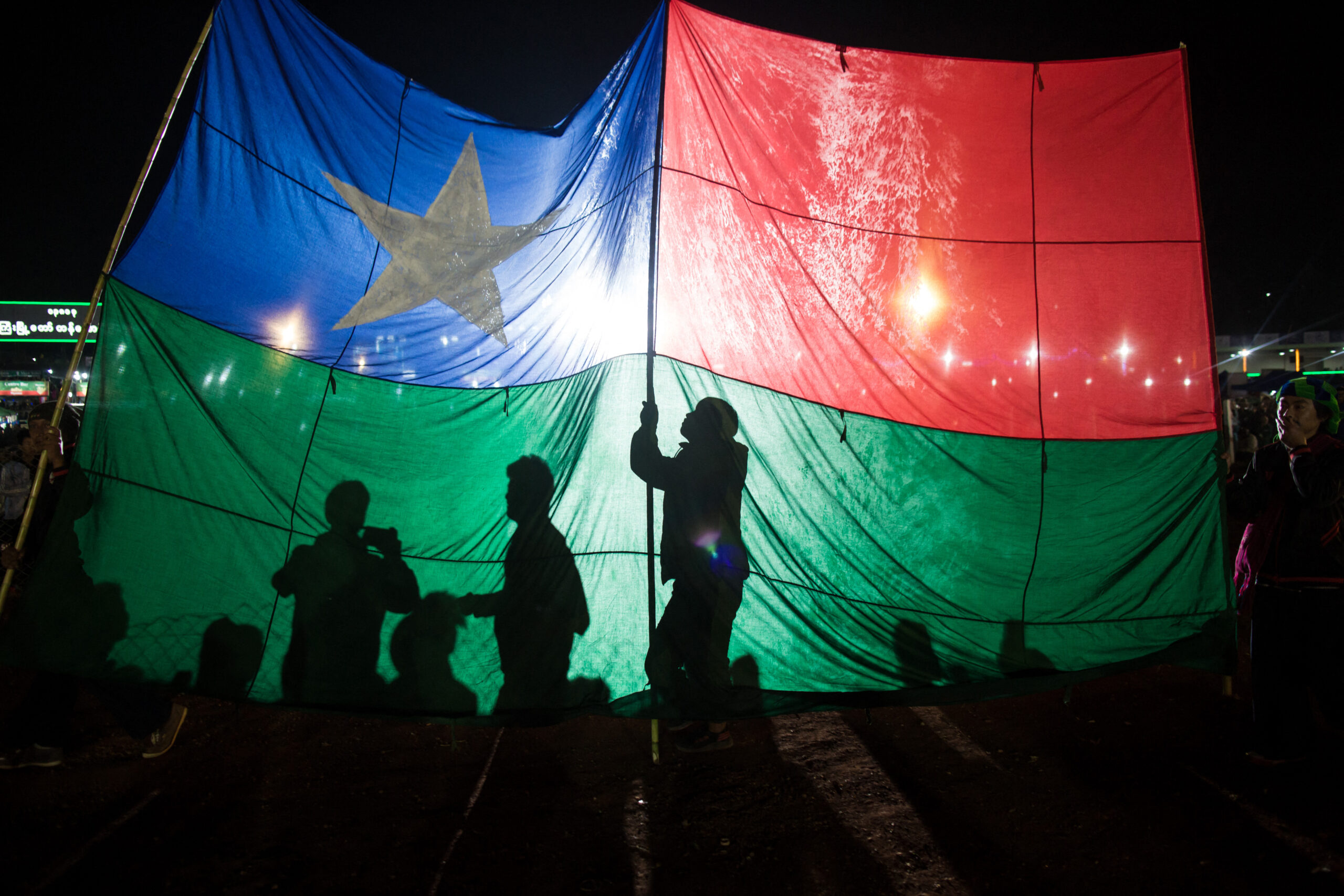Two popular pilgrimage sites in Shan State have been tainted by the touch of man.
By KYAW PHONE KYAW | FRONTIER
April is the cruelest month in Myanmar. Thingyan, the Buddhist New Year water festival, must have been created by our ancestors to offer some relief from the unbearable heat. The practice has changed over the centuries, but to this day people from all over the country step outside in mid-April to face dangerous UV rays and get drenched with cold water.
This year I did what many have begun to do on their holiday: I headed east to someplace cooler than Myanmar’s scorched central plain.
A journalist’s vacation is never truly a holiday. In the cool corners of Shan State I soon found myself enthralled, a parachute journalist in my own country. Shan State is an attractive place for tourists; the beautiful gold mohur trees are in full bloom this time of year, vast green vineyards stretch across the hillsides, and pine woods offer a cool shade with welcoming wind, even at the peak of the hot season.
But amid the splendour I began to feel blue when I reached the famous pilgrimage sites of the Pindaya and Htam Sam caves.
Support more independent journalism like this. Sign up to be a Frontier member.
Most Myanmar people have heard of Pindaya, with natural limestone caves filled with Buddha statues of various sizes. There are more than 8,000 figures – some the size of your little finger, others larger than lifesize.
A narrow lane leads visitors through a chamber that is more than 400 feet long, but because of the profusion of pilgrims and other tourists it’s difficult to get a good look at anything. The line must keep moving.
I went to the caves because I was curious; I had read about the statues inside, some of them were believed to be up to four centuries old. Dr Than Tun, a famous Myanmar historian, wrote about the artworks inside Pindaya, dating them back to the 17th century. The treasure-filled cave was discovered by local people just a few decades ago, and it has since become a sacred site of pilgrimage.
But when I went inside I was shocked. I didn’t see the untouched relics I had come so far to find. Instead, on the bases of the statues were modern-looking placards bearing the names of renowned physicians and high-ranking military officers. I wondered why. Something must be wrong, I thought.
I am lucky to have a friend who is a native of the area, and another who is a member of the cave’s authority board. The names beneath the Buddha statues were not those of the original patrons, but more recent donors who had offered gold flakes to adorn the figures with golden robes.
Nobody knows who first built the original statues, and now there are newly built Buddha images mixed in among them. To me, the site had no ancient flavor. It seemed, in a way, that the vision of the original donors had been robbed by modern men.
If I was disappointed by what happened to Pindaya, I found the situation at Htam Sam to be even worse. Located in Hopong Township in the autonomous Pa-O self-administered zone, this limestone cave remains under the control of the Pa-O National Liberation Organization, one of Myanmar’s myriad ethnic armed groups. The PNLO kept the site strictly off-limits until 2010.
Today it is open to visitors, but it is guarded by dozens of armed men donning militia badges, lining the caves inside and out. The guards built an office there, tearing out part of the natural wall and lining it with concrete. Inside the main cavern there are about 50 new Buddha statues of various styles, but they are not traditional in their appearance.
A monk, flanked by two armed guards and another man in uniform, blessed the sāvaka – his disciples – and in turn they offered donations. The man in uniform shouted through a loudspeaker, warning visitors not to photograph the monk. None of us knew why, but it seemed that this monk was a very influential figure in the region.
The inside of the cave had been turned into a sort of amusement park, filled with man-made things. There was a life-size plaster sculpture of a horse, and imitation grass made of plastic lining a concrete pathway. The cave’s natural ecosystem seemed to have said goodbye forever. The concrete, not yet covered with moss, must have been poured in recent years. I imagined that the cave was very beautiful before it was touched by man.
There were many tourists, who had made the pilgrimage over their Thingyan holiday, but the site attracted no foreigners. I asked myself, “Why would they want to come here? To look at concrete and fake grass?”
Fortunately, there was still a lot to love about Shan State when I left the caves and returned to the cool, fresh air of the eastern hills. I consoled myself with the knowledge that all manner of undiscovered and beautiful things remained in Myanmar’s largest state.







